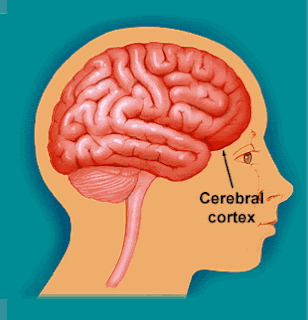There are many types of theories regarding emotions, but in this blog, we'll identify a few.
------------------------------------------------------------------------
------------------------------------------------------------------------
The James-Lange Theory
• Theory states that a sequence of events results in an emotional experience
• Our physical state becomes aware of a situation, which leads to an identification of subjective feelings. (fig. 1)

http://media.wiley.com/Lux/84/25284.ngr001.jpg
Fig. 1
• Believes that pent-up anger will somehow make things worse, and when at its limit and released, any emotions from a person will be emptied.
• Studies regarding this theory showed that when participants were instructed to move their faces in a particular way, they reported feeling the emotions that they portrayed.
• For example, when asked to smile, they felt happy for no reason.
• But, studies also showed that expressing of emotions are more likely to enhance than reduce our feelings.
Real life example:
In a office setting, when the boss enters the common room, the sight of the boss illicit physical responses and thus the brain will interpret that response as fear.
------------------------------------------------------------------------
The Canon-Bard Theory

http://media.wiley.com/Lux/85/25285.ngr002.jpg
Fig. 2
Real life example:
In a office setting, when the boss enters the common room, the authority of the boss triggers subjective feeling of fear and physiological fight or flight response. Thus, workers will choose to stay in the same room or find an excuse to leave the room.
------------------------------------------------------------------------
The Schachter-Singer Theory

Fig. 3
Real life example:
In a office setting, when the boss enters the common room, sight of boss initiate general arousal and the situation is accessed cognitively to find out what caused the arousal, and the the feeling is identified as fear.
------------------------------------------------------------------------
Contemporary Theories of Emotion
Sight of boss in home clothes in the streets initiate general arousal and a significant amount of cognitive processing is used to find out what caused the arousal and to evaluate feeling. Then, the feeling is identified as fear and workers avoid talking to their boss even though it's not a work day.
------------------------------------------------------------------------
In a nutshell!
Feelings are vital to our daily lives, as they enable us to experience the world and communicate with others. Just like when a person walks into his/her office and smiles, others would interpret it differently.
• Theory states that a sequence of events results in an emotional experience
• Our physical state becomes aware of a situation, which leads to an identification of subjective feelings. (fig. 1)

http://media.wiley.com/Lux/84/25284.ngr001.jpg
Fig. 1
• Believes that pent-up anger will somehow make things worse, and when at its limit and released, any emotions from a person will be emptied.
• Studies regarding this theory showed that when participants were instructed to move their faces in a particular way, they reported feeling the emotions that they portrayed.
• For example, when asked to smile, they felt happy for no reason.
• But, studies also showed that expressing of emotions are more likely to enhance than reduce our feelings.
Real life example:
In a office setting, when the boss enters the common room, the sight of the boss illicit physical responses and thus the brain will interpret that response as fear.
------------------------------------------------------------------------
The Canon-Bard Theory
- Theory states that both the subjective and physical responses occur simultaneously and independently. (fig. 2)
- According to theory, the central nervous system has the ability to produce an emotion directly.

http://media.wiley.com/Lux/85/25285.ngr002.jpg
Fig. 2
Real life example:
In a office setting, when the boss enters the common room, the authority of the boss triggers subjective feeling of fear and physiological fight or flight response. Thus, workers will choose to stay in the same room or find an excuse to leave the room.
------------------------------------------------------------------------
The Schachter-Singer Theory
- Theory states that the stimulus first produces general arousal. Then, there would be a cognitive assessment done on the situation which allows a subjective feeling to be identified. (fig. 3)

Fig. 3
Real life example:
In a office setting, when the boss enters the common room, sight of boss initiate general arousal and the situation is accessed cognitively to find out what caused the arousal, and the the feeling is identified as fear.
------------------------------------------------------------------------
Contemporary Theories of Emotion
- States that highly specific physical response leads to unambiguous recognition by the cerebral cortex (fig. 4).

http://www.morphonix.com/software/education/science/brain/game/specimens/images/cerebral_cortex.gif
Fig. 4
- On the other hand, least differentiated physical signals produce general arousal, which require significant cognitive processing and evaluation in a manner consistent with the Schachter-Singer Theory.
- This model predicts that emotional response may range from immediate to delayed, based on the amount of cognitive processing required.
Sight of boss in home clothes in the streets initiate general arousal and a significant amount of cognitive processing is used to find out what caused the arousal and to evaluate feeling. Then, the feeling is identified as fear and workers avoid talking to their boss even though it's not a work day.
------------------------------------------------------------------------
In a nutshell!
Feelings are vital to our daily lives, as they enable us to experience the world and communicate with others. Just like when a person walks into his/her office and smiles, others would interpret it differently.
No comments:
Post a Comment